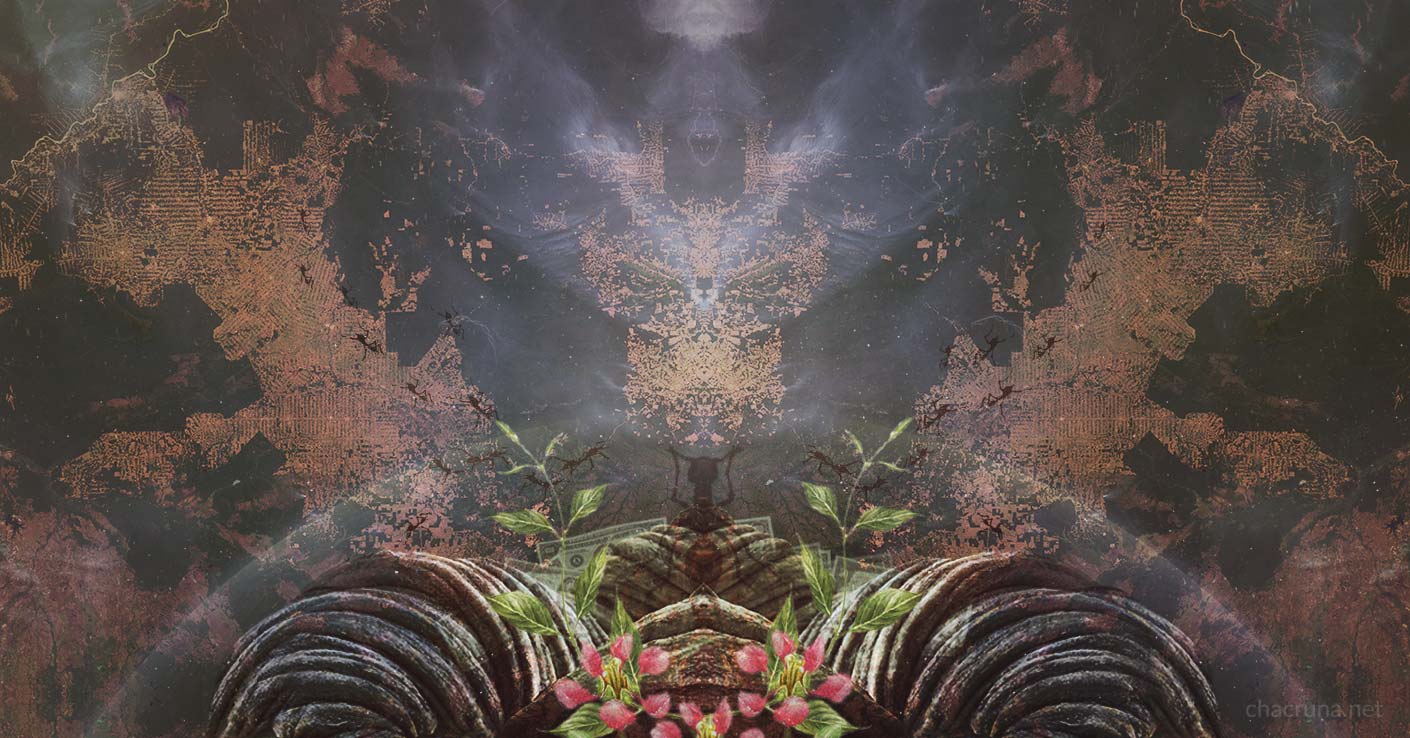- 6 Ways Ayahuasca Works like a Good Trauma Therapist - May 8, 2018
- The World’s Best Practices for Integrating Ayahuasca - October 23, 2017
- Is Ayahuasca Really Disappearing? - October 2, 2017
At the April 2017 Psychedelic Science Conference in Oakland, I heard more than a few attendees speaking in grim tones about the depletion of ayahuasca in the Amazon. In the Ayahuasca Community Forum, some suggested that the plant was on the verge of extinction due to overharvesting. One woman announced that concern for the preservation of ayahuasca had inspired her to substitute a chemically similar blend of Syrian rue and acacia. She suggested we all consider doing the same.
The handful of us attending from Peru were wondering what, exactly, was going on. I hadn’t heard such dire rumors in the Amazon. A few months ago I’d listened as the permaculture manager of a center near Iquitos responded to a question about ayahuasca depletion. “It’s a jungle vine,” he said. “It grows fast, like everything here.” Alongside widespread rumors of extinction, a new meme has sprouted: “sustainable ayahuasca.” Forums discuss the need to grow one’s own caapi,1while ceremony participants are promised the opportunity to harvest vine and plant seedlings at the same time.2 Is ayahuasca truly a threatened species, as some suggest? Does “sustainable ayahuasca” exist, and what does it look like? And what about chacruna, the other common ingredient in the brew?
Localized Shortages vs. Extinction
Returning to Pisac, I started digging into the evidence. With virtually no scientific research published on the matter, I drew on online articles, interviews, and anecdotal accounts. There’s widespread consensus that easily accessible sources of vine near the Peruvian towns of Iquitos and Pucallpa are disappearing3 4 and that local collectors must travel further into the jungle to harvest wild ayahuasca.5
“There is and has been a huge ayahuasca demand in the last years, and [it] is more difficult to find it in the forest, especially in the area of influence of Iquitos (rivers Ucayali, Marañón and Napo),”6 said Carlos Suárez Alvarez, researcher and author of the multimedia book Ayahuasca, Iquitos and Monster Vorāx. The demand is both local and for export abroad.
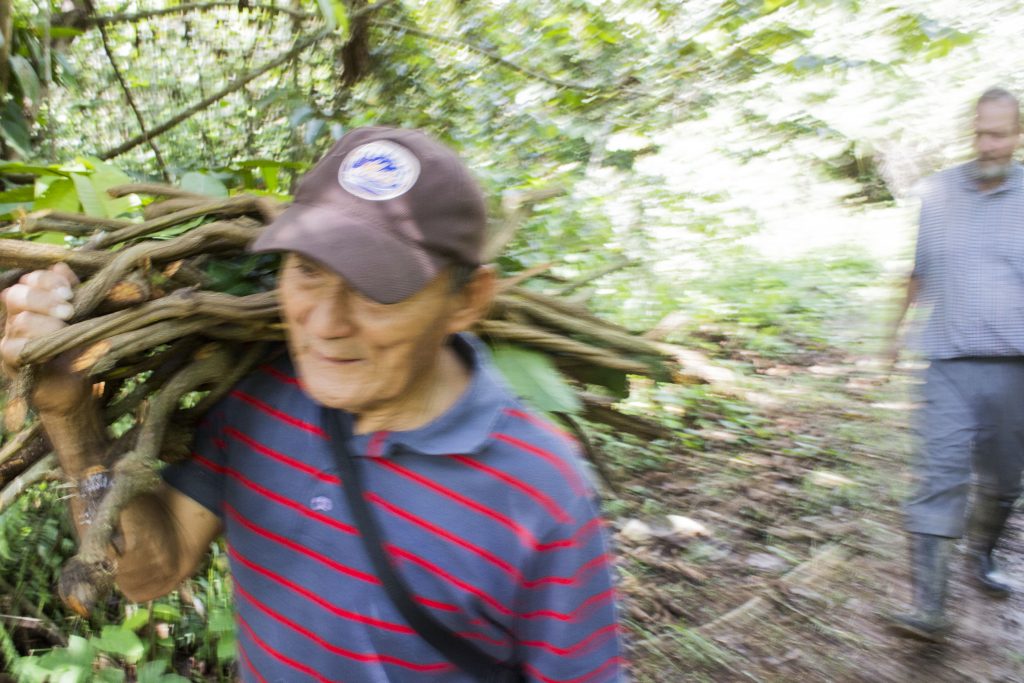
The situation with chacruna (Psychotria viridis) is similar. Wild chacruna has become scarce around Iquitos, and Suárez reported that the current supply comes mainly from plantations around Pucallpa.7 He added that in the past few years, Iquitos ayahuasca cooks have shifted towards the use of plantation-grown huambisa (Diplopterys cabrerana) as the source of DMT, as it’s easier to grow and reportedly produces more powerful visions.
Plantations in Peru
In response to market demand, ayahuasca plantations have sprung up in Peru (they have been established longer in Brazil and Hawaii). A 2015 MAPS report indicated that local price increases reflect economic opportunity rather than shortages, with plants increasingly grown to supply retreat centers.8 Dr. Joe Tafur, formerly of Nihue Rao, delivered a similar message in the Ayahuasca Community Forum: Farmers from surrounding villages are planting ayahuasca and selling it to centers. Ayahuasca is becoming a cash crop.
Ayahuasca plantations may have a lot to do with the future sustainability of the plant. “I think there is a great potential for the sustainable use of these plants as long as they come from plantations,” Suárez commented. He pointed out that wild harvesting doesn’t offer sustainability: even if collectors were to replant part of the harvested vine, young ayahuasca requires a degree of light unavailable in the densely forested Amazon to grow quickly enough to meet the escalating demand.
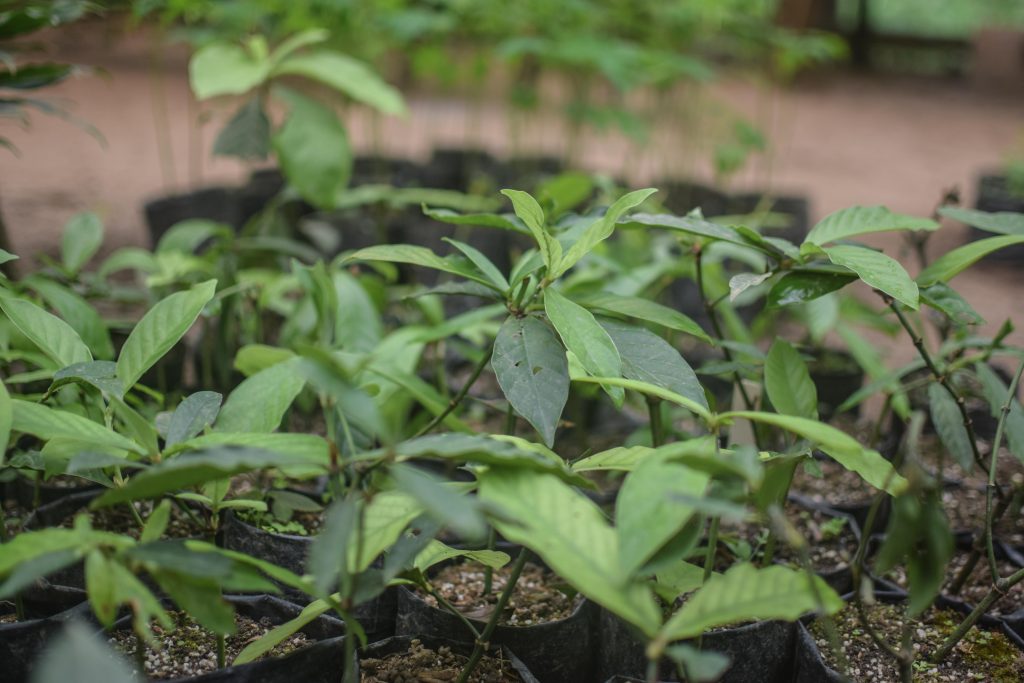
Ayahuasca in Brazil
In Brazil, the government has been regulating ayahuasca/chacruna harvesting by syncretic churches since initial agreements in 1998.9 Thiago Martins e Silva is a forest engineer who has helped develop environmental regulations on ayahuasca harvesting for the State of Acre, where the vast majority of wild Brazilian ayahuasca grows. Organizations must register with the state, present plans for reforestation, and gain legal permission to harvest ayahuasca in specific locations.
The intention was to reduce overharvesting and create a clear regulation mechanism, but “now it seem like we shot ourselves in the foot,” Martins commented wryly.10 Because regulatory agencies like Instituto de Meio Ambiente do Acre (IMAC) lack sufficient employees to patrol the forest, they only monitor harvesting by registered ayahuasca centers, sometimes causing delays and difficulties with preparation.
“IMAC regulates only the ‘correctly’ legal persons, the ones that have plantations and are concerned about the forest,” Martins said. Individual vendors continue to operate with little oversight. And overharvesting remains a problem in Acre: Martins reports that ayahuasca vendors are locally called formigas (ants) for the way they raze the forest where they pass, pulling down trees as well as vine. “Nowadays it is not so easy to over-harvest wild jagube (ayahuasca) and chacruna, but it is not so difficult either,” he noted.

Rumors of Extinction
When I asked Carlos Suárez about those rumors of ayahuasca extinction, he scoffed: “No way. That’s simply not going to happen. First of all, because there are lots of plantations going on—people have seen that it’s a business and are starting to plant. It’s become a cash crop. And everyone is absolutely clear about it and a lot of people are starting to grow.”
Secondly, he suggested, wild ayahuasca will continue to survive in more inaccessible regions of the Amazon. While the areas around Iquitos and Pucallpa are becoming depleted, there’s a limit to how far harvesters will travel: after a certain point, the economic return is not viable.
Seeds for the extinction rumor may have been planted by the ill-fated Ethnobotanical Stewardship Council, which reported localized shortages of ayahuasca admixture plants.11 The ESC’s alarmist campaign (its hashtag #ProtectAya might have added something to the mix) possibly created momentum for the belief. Publications have picked it up and run with it, as in a recent headline in The Guardian reporting that a reduced supply has led to “fears of deforestation”12—or an article for Vice suggesting, “the rush for ayahuasca has tribes questioning the sustainability of their own ceremonies.”13
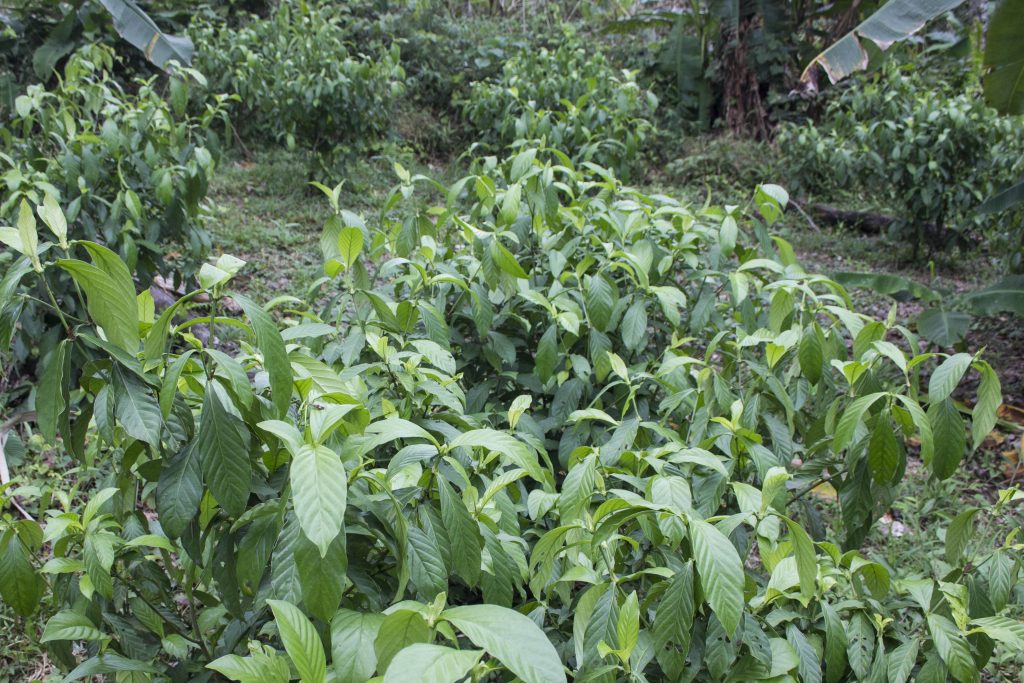
The Real Problem
You could view the myth of extinction as a desire to do good run amok; well-meaning people susceptible to believing the worst about Western materialism. A cynic might view it as subtle competition to see who is more spiritual; a sort of holier-than-thou sensitivity cultivated to the point of Politically Correct Disorder. The real problem is that this kind of guilt-induced fixation blinds us to the real problems.
Step back and take a wider view, and the urban myth about ayahuasca going extinct distracts us from a bigger, uglier truth. The Amazon rainforest is facing relentless deforestation, driven by the spread of cattle ranching, palm oil plantations, gold mining, and other forms of “development.” About 1.5 million acres of Amazonian rainforest are cut annually, and that rate has shot up alarmingly over the past year in Peru.14 In light of this, focusing on the purported demise of ayahuasca seems myopic.
This kind of distorted view of reality reminds me of a similar phenomenon I witnessed in Nepal, where I lived in the ‘80s and ‘90s. A great deal of publicity and guilt was being expended in the Western press on the garbage left by climbers on Mt. Everest: Unsightly, absolutely; ethically wrong by modern standards, certainly. But Nepal’s most serious pollution problem was not acknowledged at all: the contaminated water that was killing 16,000 children a year from waterborne disease.15 (Rates have halved since, but are still unconscionably high.) Prioritizing litter over lethal pollution signals a skewed view of reality.
Similarly, the need to travel deeper into the forest to gather ayahuasca vine, while concerning, is not on a par with the massive ongoing obliteration of that very forest. If ayahuasca drinkers are responsible for the depletion of nearby sources of vine, all of us beef-eating, oil-burning, palm-oil-consuming members of consumer society bear some responsibility for the destruction of the Amazon. And this responsibility is not just in terms of the extracted products, but also in the unsustainably high standard of living our societies projects outward as a model to aspire to. Consumer society is the greatest threat to ayahuasca, Amazonian culture, and the biodiversity of the planet—but nobody in the Ayahuasca Forum was talking about this connection.
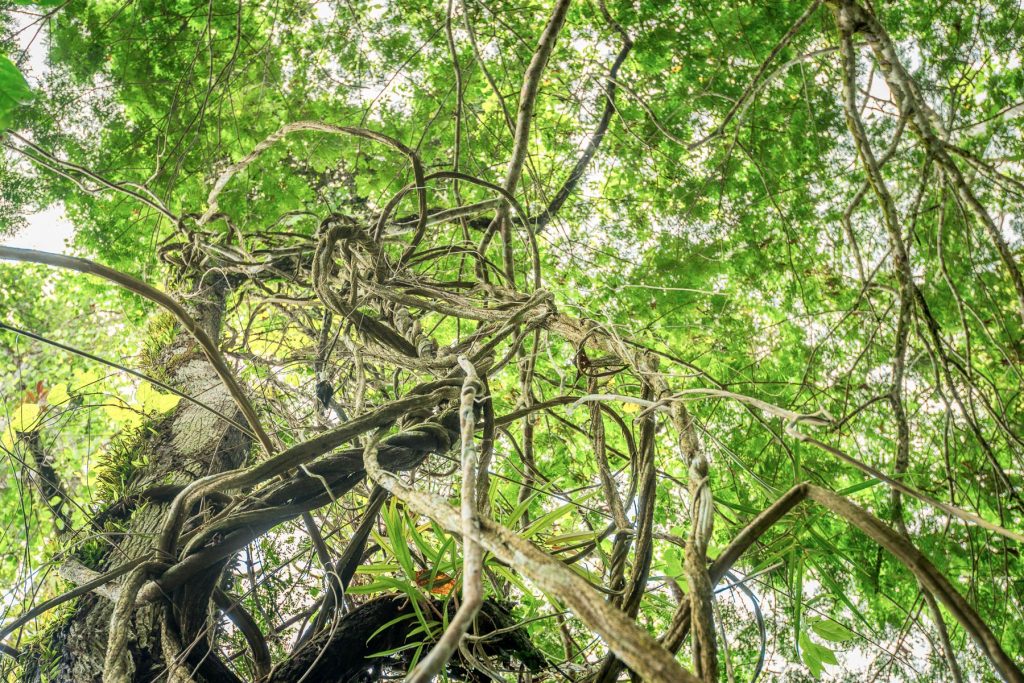
A Broader Perspective
With regard to ayahuasca depletion, I suggest we take a broader, more nuanced and actually more urgent view, one that encompasses both the micro and the macro perspectives:
Sustainability is important. Peruvian centers and ayahuasqueros need to grow vine and leaf, and encourage the current trend towards local farmers marketing these. It’s true that ayahuasca plantations don’t present as ideologically pristine an image as that of vine sourced from virgin forest, but the Amazon being what it is—a constant and complex dance between diverse species and human habitation—it’s doubtful that ideal was ever really the case: According to Gayle Highpine, virtually all old-growth Amazonian ayahuasca was planted by humans at some point.16 17
It’s also important that as ayahuasca use keeps expanding globally, governments of South American countries follow Brazil’s lead in developing regulations regarding extraction and harvesting. Local communities should be consulted and participate actively in the shaping of these regulations.
And:
We need to pay serious attention to what’s happening in ayahuasca’s homeland, and support local efforts to protect the Amazon and its indigenous peoples. This means developing economically viable ways of preserving the Amazon’s forest and traditional cultures, and creating ecologically sustainable paths to economic sustainability for the millions in the region who are seeking more. Alternative development is where the action truly lies, and the responsibility for this rests directly on participants in consumer culture.
In part, this can happen as we open to non-Eurocentric (often indigenous) ways of thinking—the “Epistemologies of the South” that Portuguese sociologist Boaventura da Sousa Santo speaks of.18 In doing so, we re-embrace a more connected perception; one that blends embodied emotion, intuition, and rationality. It’s precisely this kind of reconnection—to self, to body, to others, to the Earth—that ayahuasca itself is offering us, on an increasingly global scale.19 Transforming our current ways of living—and thinking—requires that we heal the modern-day separation between head and heart, spirit and body, man and Earth. These are complex issues; not nearly as simple an equation as the tale of greedy seekers plundering supplies of a magical vine.
Like diamonds and gold, sweatshop jeans and Foxconn phones, ayahuasca is a product with a provenance. Far from facing extinction, it’s entered the realm of marketable commodity. Acknowledging this fact may be disillusioning for some—but the sooner we take responsibility for it, the better.
Thanks to Bia Labate for editorial feedback and support.
- “Sustainable Caapi?” June 1, 2010, (forum post) https://www.dmt-nexus.me/forum/default.aspx?g=posts&t=12947. ↩
- Punker, Charlie, “Sustainable Ayahuasca: Harvest, Plant, Brew, Drink, Enjoy,” Natural Medicine Gathering, March 17, 2017, accessed July 4, 2017, http://naturalmedicinegathering.com/2017/03/sustainable-ayahuasca/. ↩
- Max Opray, “Tourist Boom for Ayahuasca a Mixed Blessing for Amazon,” The Guardian, January 24, 2017, accessed May 7, 2017, https://www.theguardian.com/sustainable-business/2017/jan/24/tourist-boom-peru-ayahuasca-drink-amazon-spirituality-healing. ↩
- Carlos Suárez Alvarez, Ayahuasca, Iquitos and Monster Vorāx, 2015, multimedia book, accessed at http://www.ayahuascaiquitos.com/en/index.php/libro-2. ↩
- Carlos Suárez Alvarez, “An Interview with Alan Shoemaker,” Ayahuasca, Iquitos, and Monster Vorāx, 2015, http://www.ayahuascaiquitos.com/en/index.php/2016-09-08-15-11-30/2016-07-06-13-19-14/alan-shoemaker. ↩
- Carlos Suárez Alvarez, e-mail message to author, July 4, 2017. ↩
- Carlos Suárez Alvarez, personal communication, July 8, 2017. ↩
- Sitaramaya Sita, “The Ayahuasca Industry and Global Healing in an Experience Economy,” MAPS Bulletin Spring 2016, 26, No. 1: 38–41. ↩
- Beatriz Caiuby Labate, “Legal, Ethical, and Political Dimensions of Ayahuasca Consumption in Brazil,” Erowid.org, June 30, 2013, https://erowid.org/chemicals/ayahuasca/ayahuasca_law30.shtml. ↩
- Thiago Martins e Silva, e-mail message to author, August 3, 2017. ↩
- The document by the Ethnobotanical Stewardship Council, The Ayahuasca Dialogues Report, published in November of 2014 has been removed since the Council disbanded. ↩
- Opray, “Tourist Boom for Ayahuasca.” ↩
- Marina Lopes, “Millennials on Spirit Quests Are Ruining Everything About Ayahuasca,” Vice: Motherboard, October 26, 2016, accessed May 12, 2017, https://motherboard.vice.com/en_us/article/78kmvx/millennials-on-spirit-quests-are-ruining-everything-about-ayahuasca. ↩
- Rhett Butler, “Amazon Destruction,” last updated January 26, 2017, accessed August 20, 2017, http://rainforests.mongabay.com/amazon/amazon_destruction.html. ↩
- United Nations International Children’s Emergency Fund, “Nepal: Background,” accessed August 20, 2017, https://www.unicef.org/infobycountry/nepal_nepal_background.html. ↩
- Sachahambi (Gayle Highpine), September 6, 2010 (5:09 am), comment on “Is Ayahuasca Becoming an Endangered Species?,” Ayahuasca Forums, September 5, 2010, http://forums.ayahuasca.com/viewtopic.php?t=23327. ↩
- Sachahambi (Gayle Highpine), January 20, 2010 (5:02 am), comment on “How Do Curanderos Get Their Vine?,” Ayahuasca Forums, January 20, 2010, http://forums.ayahuasca.com/viewtopic.php?t=21606. ↩
- Boaventura da Sousa Santos, Epistemologies of the South: Justice Against Epistemicide (Abingdon-on-Thames, UK: Routledge, 2014). ↩
- Adam Andros, “Feeling-Thinking with the Plants: Ayahuasca Healing, Research and Cognitive Justice,” Drogas, Politica y Cultura (blog), August 21, 2017, http://drogaspoliticacultura.net/blog/2017/08/21/feeling-thinking-with-the-plants-ayahuasca-healing-research-and-cognitive-justice/. ↩
Take a minute to browse our stock:
Did you enjoy reading this article?
Please support Chacruna's work by donating to us. We are an independent organization and we offer free education and advocacy for psychedelic plant medicines. We are a team of dedicated volunteers!
Can you help Chacruna advance cultural understanding around these substances?


